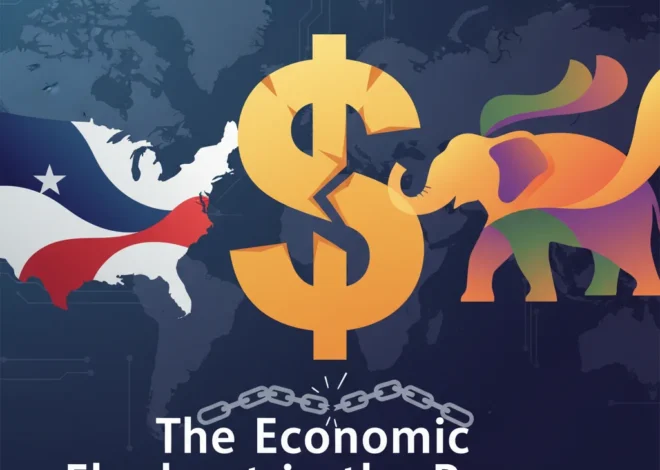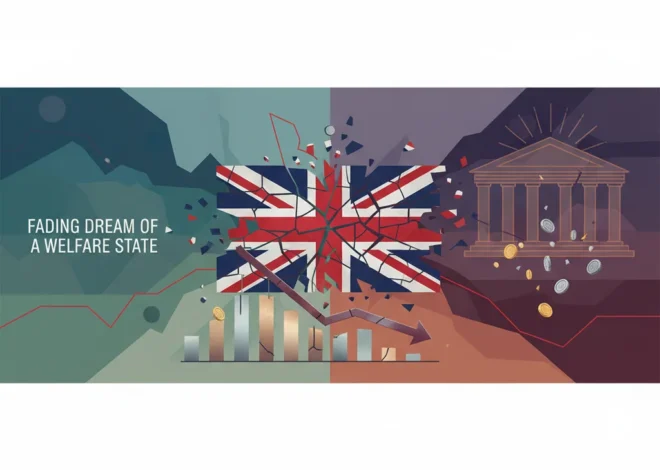
The Swiss Gambit: Why “Too Big to Fail” Just Met Its Match in the Alps
In the high-stakes world of global finance, the phrase “too big to fail” has become a haunting incantation—a reminder of the 2008 financial crisis when governments worldwide poured trillions of dollars into failing banks to prevent a total economic collapse. The logic was simple, if painful: some financial institutions are so large and interconnected that their failure would trigger a catastrophic domino effect. The solution? Bailouts. The consequence? A lingering sense of injustice and the creation of “moral hazard,” where banks could take excessive risks, confident that a public safety net would catch them if they fell.
For over a decade, regulators have been on a crusade to dismantle this paradigm, erecting complex walls of rules like the Dodd-Frank Act and Basel III. The goal was to ensure that no bank would ever again hold the global economy hostage. But recently, in a move that stunned many observers, one country decided to take a different path. Switzerland, a nation whose identity is inextricably linked with banking, rejected a plan to impose even tougher regulations on its last remaining megabank, UBS.
This decision was lauded by some as a courageous stand for free-market principles. In a concise letter to the Financial Times, one reader, Ted Gaffney, praised the Swiss for exercising a “bit of backbone.” He framed the choice starkly: adopt “yet another set of complex, opaque and burdensome regulations” or simply say “no” to bailouts and let failed banks fail. The Swiss, he argued, chose the latter—a lesson the rest of the world should heed (source). But is this a show of strength or a reckless gamble with global financial stability? Let’s delve into the Swiss gambit and what it means for the future of banking, investing, and the global economy.
The Ghost of Crises Past: Why “Too Big to Fail” Haunts Global Finance
To understand the gravity of Switzerland’s decision, we must first revisit the core problem. The “too big to fail” (TBTF) dilemma arises when a financial institution becomes so systemically important that its collapse would trigger a widespread financial crisis. This isn’t just about size; it’s about interconnectedness. These banks are central nodes in the vast network of global trading, lending, and payments. The failure of Lehman Brothers in 2008, which was allowed to collapse, provided a terrifying real-world example of the ensuing chaos, freezing credit markets and accelerating the global recession.
The subsequent bailouts of other institutions, while preventing immediate implosion, created a deep-seated problem: moral hazard. If a bank knows it will be rescued, its incentive to manage risk prudently is diminished. This privatizes profits while socializing losses—a formula for encouraging reckless behavior. The post-2008 regulatory framework was designed to solve this by forcing banks to hold more capital, undergo “stress tests,” and create “living wills” for an orderly wind-down in case of failure. The goal was to make bailouts a relic of the past.
Yet, the specter of TBTF never truly vanished. The 2023 crisis in the US regional banking sector, which saw the collapse of Silicon Valley Bank and Signature Bank, demonstrated that even mid-sized institutions could spark systemic panic. The government’s response—insuring all deposits, even those above the FDIC limit—felt uncomfortably like a backdoor bailout, proving that when faced with potential chaos, the political will to let institutions fail can quickly evaporate (source).
Beyond the Click: How AI in Advertising is Reshaping the Economy and Your Investment Portfolio
The Swiss Dilemma: A Nation, A Bank, and an Existential Risk
Nowhere is the TBTF problem more acute than in Switzerland. The situation was dramatically amplified in March 2023 when the country’s second-largest bank, Credit Suisse, teetered on the brink of collapse. To avert a global financial meltdown, the Swiss government brokered a shotgun wedding, forcing its larger rival, UBS, to acquire Credit Suisse. This emergency maneuver solved one problem but created another, much larger one: a single banking behemoth whose balance sheet is now roughly double the size of the entire Swiss economy.
This concentration of risk is staggering. To put it in perspective, consider the scale of the world’s largest banks relative to their home economies.
| Bank | Home Country | Total Assets (USD) | National GDP (USD) | Assets as % of GDP |
|---|---|---|---|---|
| UBS Group AG | Switzerland | ~$1.7 Trillion | ~$905 Billion | ~188% |
| JPMorgan Chase | United States | ~$3.9 Trillion | ~$27.3 Trillion | ~14% |
| HSBC Holdings | United Kingdom | ~$3.0 Trillion | ~$3.3 Trillion | ~91% |
| Deutsche Bank | Germany | ~$1.4 Trillion | ~$4.4 Trillion | ~32% |
Note: Figures are approximate and can vary based on reporting dates and currency fluctuations. Data compiled from public company filings and World Bank estimates.
As the table clearly shows, the scale of UBS relative to Switzerland is an outlier among major economies. A failure of UBS wouldn’t just be a banking crisis; it would be a national economic catastrophe. In response, the Swiss government proposed a package of reforms, including significantly higher capital requirements for UBS, that would have gone beyond existing international standards. The goal was to build a fortress around the bank. But in a surprising vote, the lower house of the Swiss parliament rejected the plan, siding with arguments that it would hamstring UBS’s competitiveness and was an overreaction (source).
Ethereum at a Crossroads: Decoding the Battle Between Market Fragility and Whale Conviction
However, the credibility of this “no bailout” promise is the trillion-dollar question. It’s easy to declare a tough stance in calm markets. It’s another thing entirely to hold that line when the abyss is staring back at you and your nation’s entire economy is on the line. History is littered with policymakers who swore off bailouts, only to reverse course when the true cost of failure became apparent. The Swiss are effectively testing one of the biggest questions in modern economics: can political will truly triumph over systemic fear? Furthermore, this entire TBTF paradigm is being challenged by the rise of financial technology. The decentralized nature of blockchain and certain fintech platforms offers a theoretical future where financial services are not concentrated in a few massive entities, potentially designing systemic risk out of the system from the start. Switzerland’s current gamble is a drama of the old world, while a new one is slowly being built.
A “Bit of Swiss Backbone” or a Reckless Gamble?
The decision to reject the stricter TBTF rules has split the world of finance and economics into two camps, perfectly mirroring the tension in Ted Gaffney’s letter.
The Case for “Backbone”
Supporters of the Swiss parliament’s decision argue it’s a necessary stand against regulatory overreach. They contend that piling on more capital requirements and rules would put UBS at a significant disadvantage against global competitors like JPMorgan Chase or Bank of America. It could stifle lending, reduce profitability, and ultimately weaken the very institution it’s meant to protect. This camp believes the ultimate regulator is the market itself. By credibly threatening to let UBS fail, the government forces the bank’s management, shareholders, and creditors to be the primary monitors of risk. In this view, the risk of failure is not a bug; it’s a feature—the essential disciplining force of capitalism.
The Case for Caution
On the other side, critics view the rejection as an act of profound recklessness. They argue that the sheer size of UBS relative to the Swiss economy makes a “no bailout” promise completely non-credible. The potential fallout from a UBS collapse—mass unemployment, a sovereign debt crisis for Switzerland, and global financial contagion—is simply too catastrophic for any government to tolerate. Proponents of the stricter rules see them not as a burden, but as a vital insurance policy paid for by the bank itself through higher capital reserves. They argue that for an institution of UBS’s systemic importance, ensuring its stability and preventing a crisis is a far greater priority than maximizing its global competitiveness. To them, Switzerland isn’t showing backbone; it’s closing its eyes and hoping for the best.
What This Means for Investors, Leaders, and the Global Economy
The Swiss gambit is more than a domestic political squabble; it’s a live experiment with profound implications for international finance.
- For Investors: The situation creates uncertainty around the stock market valuation of UBS and other European banks. While less regulation could mean higher short-term returns, it also implies a higher risk profile. Investors in the banking sector must now weigh the “Swiss model” of market discipline against the “American model” of implicit government backstops.
- For Business Leaders: The debate highlights the ongoing tension between regulation and competitiveness. For any industry with systemic importance, the Swiss case will be a key reference point in arguments about the economic cost of regulatory burdens.
– For Policymakers: Switzerland has now become the test case for a post-bailout world. Central bankers and finance ministers worldwide will be watching closely. If Switzerland can successfully manage the risk of a colossal bank without suffocating it in rules, it could inspire a new wave of thinking in economics and financial regulation. If it fails, it will serve as a stark warning for generations to come.
Conclusion: The High Price of Principles
Switzerland has placed its bet. By rejecting a path of ever-more-complex regulation, it has embraced the bracing, high-stakes principle that failure must be an option, even for the biggest players. It’s a move that champions market discipline and corporate responsibility over the perceived safety of a government backstop. Whether this is a visionary step towards a more robust and honest financial system or a catastrophic miscalculation remains to be seen.
The world of finance, from individual investors to the largest trading desks, will be watching the Alps with bated breath. Switzerland’s “bit of backbone” has set the stage for one of the most important economic dramas of our time. The outcome will help answer a fundamental question: What is the true price of stability? Is it paid through the slow, steady cost of burdensome rules, or through the courage to face the consequences of failure head-on?


